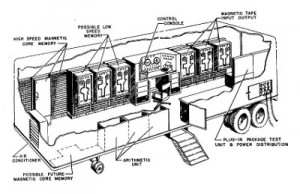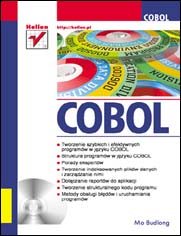 Introduced in 1959, the Xerox 914 was the first commercially available paper copier. This completely changed the document copying industry and was shown on national television in a live demo. So named because it could print originals up to 9×14, the 914 was so successful, the company that created it changed it’s name once the word Xerox was associated with copying. From there, the Xerox Corporation went on to pioneer a lot of other tech that changed the world, including the modern GUI, desktop copiers, and some of the earliest faxing technology.
Introduced in 1959, the Xerox 914 was the first commercially available paper copier. This completely changed the document copying industry and was shown on national television in a live demo. So named because it could print originals up to 9×14, the 914 was so successful, the company that created it changed it’s name once the word Xerox was associated with copying. From there, the Xerox Corporation went on to pioneer a lot of other tech that changed the world, including the modern GUI, desktop copiers, and some of the earliest faxing technology.
Category Archives: 1959
Automatically Programmed Tool (APT)
 The Automatically Programmed Tool (APT) programming language was invented at MIT’s legendary Servomechanisms Lab by Douglas T. Ross. The high level code was used to generate instructions for machine tools used in manufacturing.
The Automatically Programmed Tool (APT) programming language was invented at MIT’s legendary Servomechanisms Lab by Douglas T. Ross. The high level code was used to generate instructions for machine tools used in manufacturing.
APT is used to calculate a path that a tool must follow to generate a desired form, and it sparked a revolution in computer assisted manufacturing.
Created before FORTRAN and graphical interfaces, it also resulted in the first ANSI standard. It was used from 1959 to well into the 1970s. The language is now in the public domain, but there were many derivatives created over the years to run on minicomputers and beyond. It was so revolutionary to the industry it was crafted for, there are still elements of it being used in modern CAD/CAM design.
MOBIDIC (MOBile Digital Computer)
 Sylvania delivered the first MOBIDIC (MOBile Digital Computer) to the U.S. Army in 1959 after winning the bid for a transistorized computer that could automate the flow of information on the battlefield, taking messages in any form and passing them to their destination. This concept was called Fieldata by the Signal Corps and MOBIDIC was referred to as the AN/MYK-1.
Sylvania delivered the first MOBIDIC (MOBile Digital Computer) to the U.S. Army in 1959 after winning the bid for a transistorized computer that could automate the flow of information on the battlefield, taking messages in any form and passing them to their destination. This concept was called Fieldata by the Signal Corps and MOBIDIC was referred to as the AN/MYK-1.
The mobile system consisted of two semi trailers, one housing the computer and another running the generator for power. A handful of models were produced, including a dual CPU version that was installed at the Army’s Tactical Ops Center. The military soon found that the system was useful in other areas including logistics and supply, and eventually used it for ordnance supply and control. The Fieldata project was cancelled in 1962, and all of the MOBIDC systems that remained were sold or moved to supply operations where they continued to operate for many years.
A commercial model of the MOBIDIC was released as the Sylvania 9400, but only two were ordered by the Pentagon and California General Telephone. Sylvania abruptly left the market due to rising costs. General Telephone cancelled their order and since the machine was already built it wound up being used internally by Sylvania.
Although not very many of these machines were built and they were not well known, they are directly linked to an important computer history milestone; the Fieldata project heavily influenced the creation of ASCII years later. All development on the Fieldata project was done on the MOBIDIC systems, and it was the original, internal character set for the 1100 series UNIVACs built by Unisys. The Fieldata character set was the default in Unisys computers until 1996.
ERMA
 In 1950 the Bank of America asked SRI to assess the possibility of developing electronic computers that could take over the labor-intensive banking tasks of handling checks and balancing accounts. The creation of branch offices and the rapidly increasing number of checks being used by a growing clientele threatened to overwhelm the existing manual processing and record keeping. At that time no large-scale electronic machine for any bank was under development. Existing computers were used mostly for scientific calculations. They were unreliable, and had extremely limited input and output capability. In spite of these facts, SRI’s feasibility study, issued in May 1951, was sufficiently encouraging for the Bank of America to authorize a major multi-year development effort.
In 1950 the Bank of America asked SRI to assess the possibility of developing electronic computers that could take over the labor-intensive banking tasks of handling checks and balancing accounts. The creation of branch offices and the rapidly increasing number of checks being used by a growing clientele threatened to overwhelm the existing manual processing and record keeping. At that time no large-scale electronic machine for any bank was under development. Existing computers were used mostly for scientific calculations. They were unreliable, and had extremely limited input and output capability. In spite of these facts, SRI’s feasibility study, issued in May 1951, was sufficiently encouraging for the Bank of America to authorize a major multi-year development effort.
IBM 7030 Stretch
 The IBM 7030 Data Processing System — or “Stretch” computer — was delivered in April 1961, offering a performance that was 200 times faster than the IBM 701, 40 times faster than the IBM 709 and seven times faster than the IBM 7090. Although the 7030 was the industry’s fastest computer in 1961, its performance was far less than originally predicted. IBM cut its price from $13.5 million to $7.8 million and offered the 7030 to only eight customers.
The IBM 7030 Data Processing System — or “Stretch” computer — was delivered in April 1961, offering a performance that was 200 times faster than the IBM 701, 40 times faster than the IBM 709 and seven times faster than the IBM 7090. Although the 7030 was the industry’s fastest computer in 1961, its performance was far less than originally predicted. IBM cut its price from $13.5 million to $7.8 million and offered the 7030 to only eight customers.
Servomechanisms Lab
From MIT’s History of the Servomechanisms Lab
The MIT Servomechanisms Laboratory was established in 1939 under the direction of Assistant Professor of Electrical Engineering Gordon S. Brown. The laboratory grew out of a special program on servomechanisms and fire control (gun-positioning instruments) established by the MIT Department of Electrical Engineering in response to a request from the United States Navy.
During World War II the laboratory undertook research and development for the U.S. government and commercial contractors. Wartime projects included the development of automated control systems for the U.S. Navy’s guided missiles; servocontrols for advanced radar; and the design of a universal flight trainer, the Airplane Stability and Control Analyzer (ASCA). After the war the laboratory’s newly created dynamic analysis and control group continued to develop automated control systems for the U.S. Navy guided missiles. In 1946 this group separated to form the Dynamic Analysis and Control Laboratory.
COBOL
 COBOL (Common Business Oriented Language) was one of the earliest high-level programming languages. It was developed in 1959 by a group of computer professionals called the Short Range Commitee, a group formed by a Pentagon meeting to find a short range solution to a common business language. There were other committees as well, and experts from many computer companies such as IBM , Honeywell, RCA, and Sylvania made up each group.
COBOL (Common Business Oriented Language) was one of the earliest high-level programming languages. It was developed in 1959 by a group of computer professionals called the Short Range Commitee, a group formed by a Pentagon meeting to find a short range solution to a common business language. There were other committees as well, and experts from many computer companies such as IBM , Honeywell, RCA, and Sylvania made up each group.
Eventually a sub-committee of the Short Range group composed of William Selden and Gertrude Tierney from IBM, Howard Bromberg and Howard Discount of RCA, and Vernon Reeves and Jean E. Sammet of Sylvania Electric Products created the original COBOL specification near the end of 1959. They were influenced and inspired by Grace Hopper’s FLOW-MATIC language and IBM’s COMTRAN. The specifications were published in January 1960 as COBOL 60 and the language itself developed about six months later.
Many COBOL based applications are still in use today. In 1990 the Gartner Group estimated 80% of existing computer code was COBOL.
